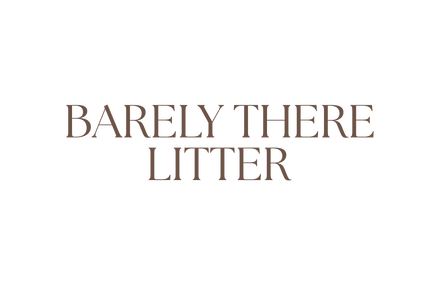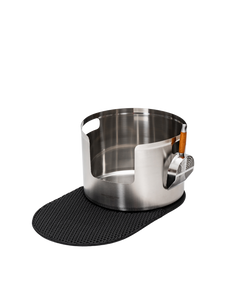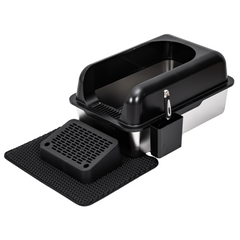Caring for our feline friends involves more than just love and affection; it demands a deep understanding of their dietary needs to prevent health issues and ensure a vibrant, healthy life. This comprehensive guide builds upon the foundation of feline nutrition to delve into the specifics of what your cat's diet should and should not include, based on the latest scientific findings and expert recommendations from Australian veterinarians.
The Science of Feline Nutrition
High-Quality Protein Sources: The carnivorous nature of cats necessitates a diet rich in high-quality animal proteins. Fresh meats like chicken, turkey, and rabbit, often listed as the first ingredients in premium cat foods, are ideal. These proteins contain essential amino acids like taurine, which are critical for heart health, vision, and reproductive functions. Ji Cheng (2006) underscores the importance of taurine, highlighting its indispensable role in cat nutrition and well-being .
Fibre for Digestive Health: While cats require less fibre than omnivores, its presence in their diet supports digestive health and aids in the formation of healthy stools. Sources such as pumpkin, beet pulp, and small amounts of fruits or vegetables can provide the necessary fibre without overloading their system. Rochus, Janssens, and Hesta (2014) emphasise the benefits of dietary fibres like fructans and beet pulp in maintaining a healthy gut microbiota .
Essential Fatty Acids: Fats are not the enemy when it comes to cats. Omega-3 and omega-6 fatty acids, found in fish oils and flaxseeds, promote shiny coats, reduce inflammation, and support cognitive health. However, the balance between omega-3 and omega-6 is crucial to avoid inflammatory disorders.
Moisture-Rich Foods: Hydration is vital for preventing urinary tract diseases. Wet food plays a dual role by providing hydration and nutritional needs, making it a recommended part of a cat's diet. Kerr (2013) discusses dietary moisture's role in preventing feline lower urinary tract symptoms (LUTS), advocating for wet food's inclusion in daily feeding regimens .
Avoiding Dietary Pitfalls
Limiting Carbohydrates: Cats have a limited ability to process carbohydrates, which means high-carb diets can lead to obesity and diabetes. Grains, fillers, and unnecessary sugars should be minimised. Instead, focus on foods that mimic the macronutrient profile of their natural prey, which is high in protein and fat but low in carbs.
Artificial Additives: Artificial colours, flavours, and preservatives can cause allergies and health issues in cats. Natural preservatives like vitamins C and E are safer alternatives.
Toxic Foods: Some foods that are harmless to humans can be toxic to cats, including onions, garlic, chocolate, and grapes. Always avoid feeding your cat human food unless you are certain it's safe.
Reading Between the Lines: Ingredient Lists and Labels
Understanding pet food labels is essential for making informed choices. Look for foods where real meat or fish is the first ingredient, indicating high protein content. "Complete and balanced" on the label means the food meets the nutritional levels established by the AAFCO Cat Food Nutrient Profiles for all life stages.
Australian Vet Insights and the Latest Science
Australian vets stress the importance of diet in managing chronic conditions like obesity and diabetes. The shift towards raw and natural diets reflects a broader trend towards minimally processed foods, believed to better align with feline evolutionary nutrition. While raw diets can offer benefits such as improved gut microbiota diversity, they also pose risks like potential exposure to pathogens and nutritional imbalances. As such, if considering a raw diet, it's crucial to consult with a veterinarian to ensure it's appropriately balanced .
Conclusion: Tailoring the Diet to Your Cat
Every cat is unique, with specific dietary needs influenced by age, health, and lifestyle. While the guidelines provided here form a solid foundation for understanding what makes a healthy feline diet, the key to success lies in customisation. Regular consultations with a veterinarian, paying close attention to your cat's health and behaviour, and staying informed about the latest nutritional science will ensure your cat enjoys a diet that's not just satisfactory, but truly optimal.
References:
- Cheng, J. (2006). Application of Taurine to Feline Nutrition. Chinese Journal of Animal Science.
- Kerr, K. R. (2013). Companion Animals Symposium: dietary management of feline lower urinary tract symptoms. Journal of Animal Science, 91(6), 2965-2975.
- Rochus, K., Janssens, G. P. J., & Hesta, M. (2014). Dietary fibre and the importance of the gut microbiota in feline nutrition: a review. Nutrition Research Reviews, 27, 295-307.
- Verbrugghe, A., & Hesta, M. (2017). Cats and Carbohydrates: The Carnivore Fantasy? Veterinary Sciences, 4(4).








